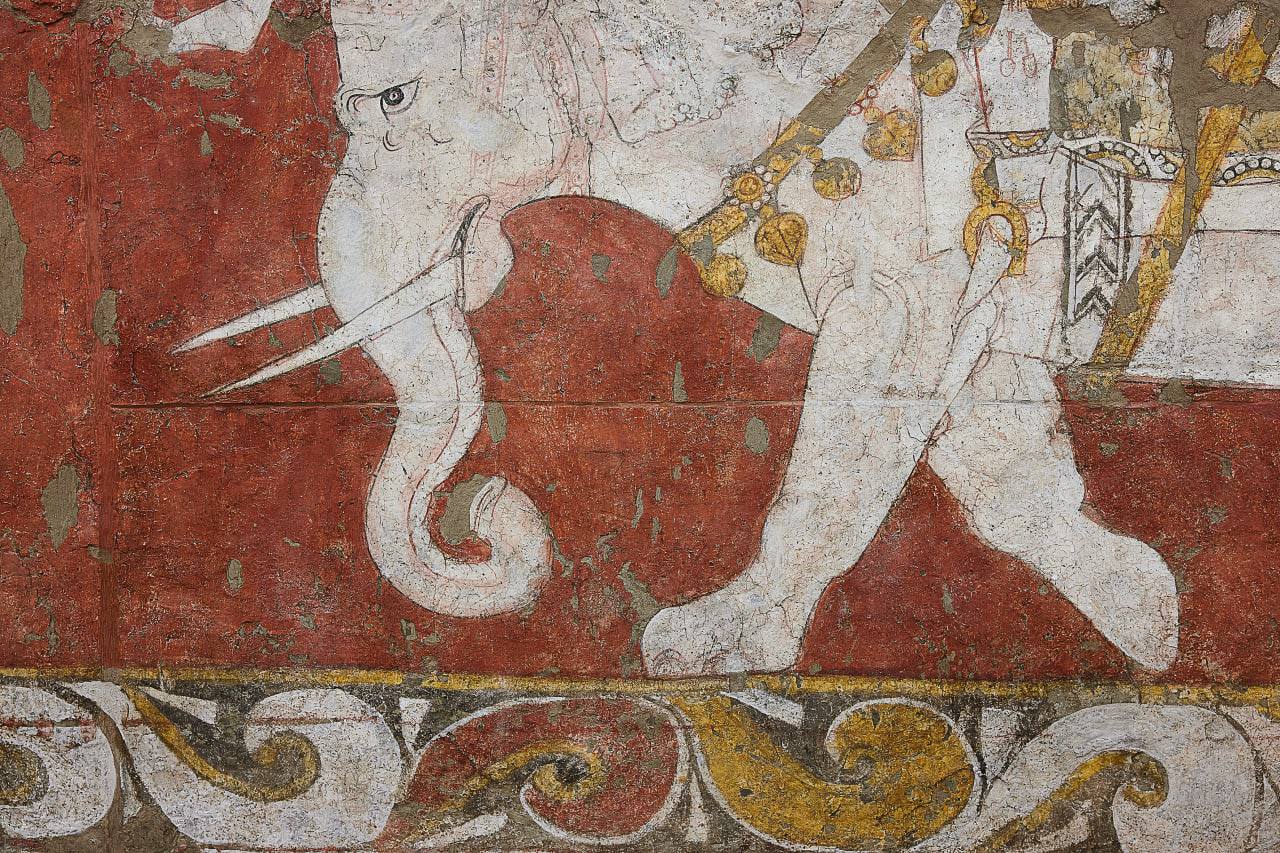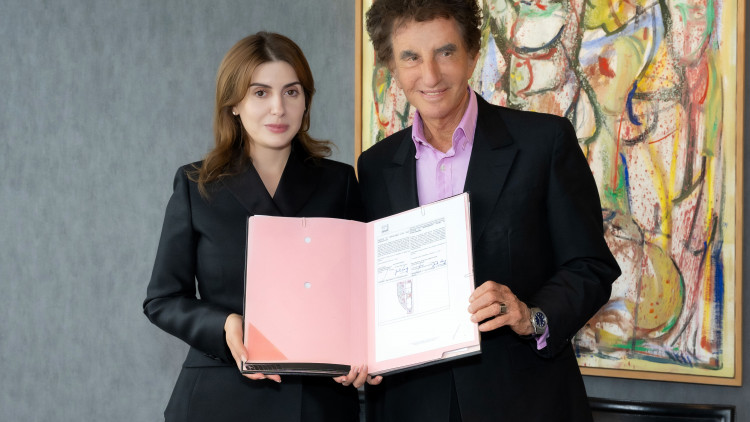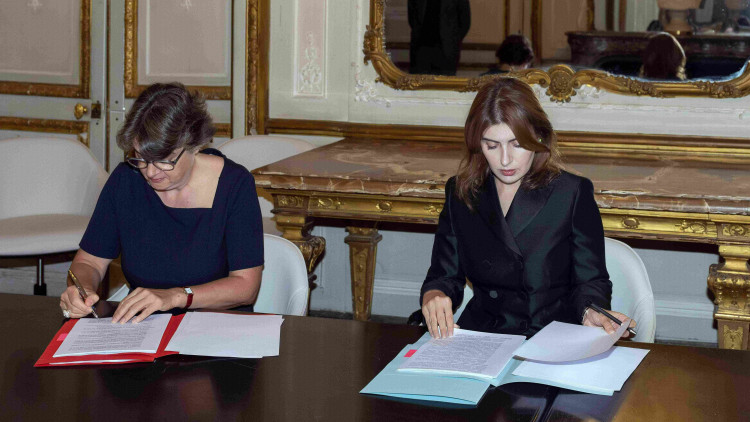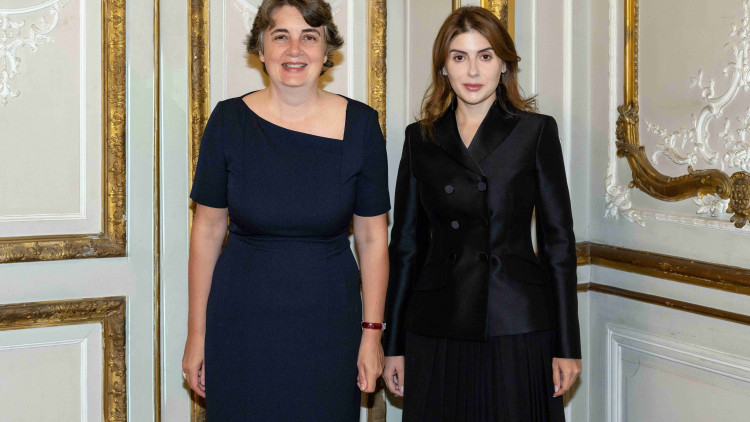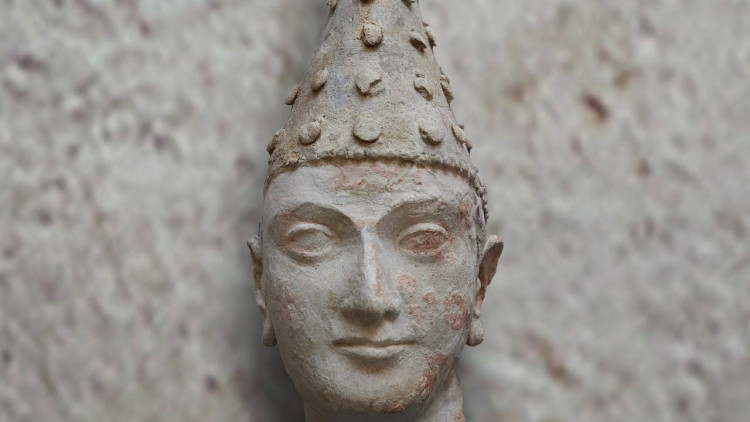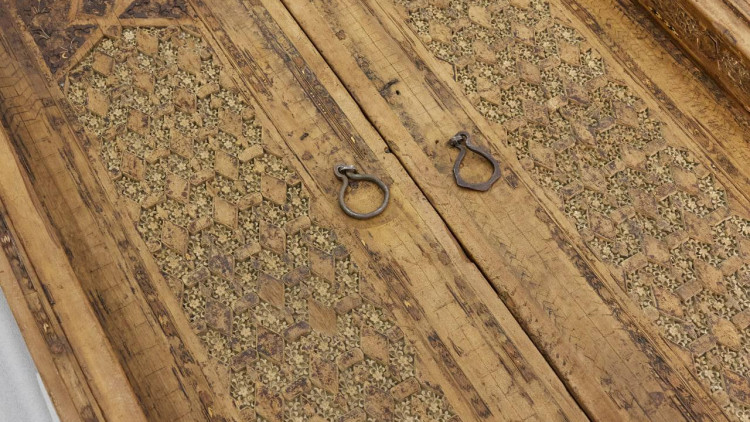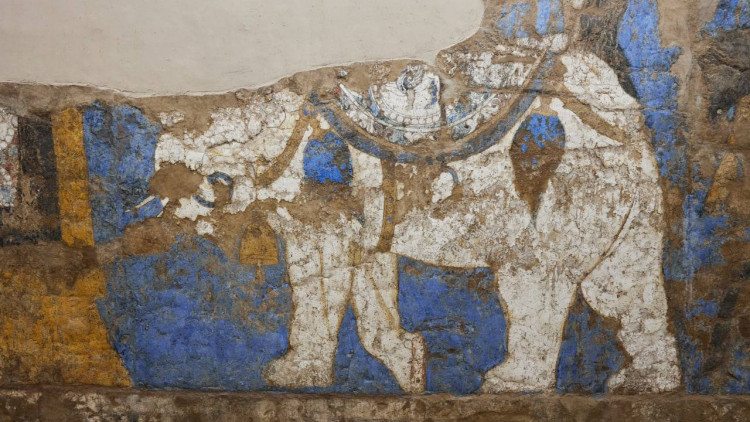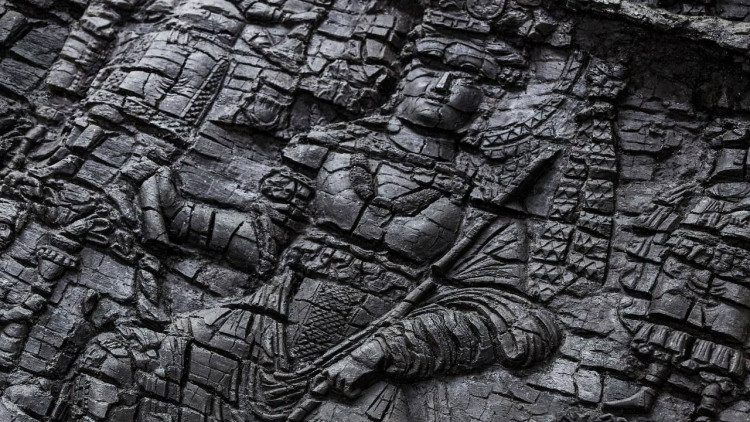In November of this year, two exhibitions dedicated to Uzbekistan will open in Paris. The first exhibition, “The splendors of the oases of Uzbekistan. At the Crossroads of the Caravan Routes”, will be held at the Louvre from November 23, 2022 to March 6, 2023. An agreement was signed on the organization of the exhibition between the executive director of the Foundation, Gayane Umerova, and the director of the Louvre Museum, Laurence des Cars. The second exhibition, “ON THE ROADS TO SAMARKAND. Wonders of Silk and Gold”, will be held at the Arab World Institute from November 22, 2022 to June 4, 2023. An agreement was signed between the Foundation and the president of the Institute, Jack Lang.
“Today, Uzbekistan and France are strong partners in many areas. We are continuously building up our cooperation in the humanitarian sphere, economy and culture. The two upcoming exhibitions are another important step in our journey together. They will be held in Paris almost simultaneously, and will provide a multifaceted view of the culture and art of Uzbekistan, demonstrating the unique heritage of our country in the global cultural context, which is one of the main tasks for us. Uzbekistan has always been the site for cultural exchange and trade, making the Silk Road, in a sense, the first global economic project”, – Saida Mirziyoyeva, deputy chairwoman of the Council of the Art and Culture Development Foundation of the Republic of Uzbekistan.
“The upcoming exhibitions in Paris are a great opportunity to demonstrate the rich cultural heritage of our country on the international stage. The Arab World Institute will host an exhibition dedicated to Uzbek textile and national costume. The arts and crafts of the regions represent an important part of the cultural heritage of Uzbekistan. Splendid embroideries, textiles, wood carvings and exquisite silverware are what we are proud of today. Some of these items, for example, quilted robes – chapans, traditional suzani embroidery, and ikat fabrics are still used in daily life in Uzbekistan. The Paris exhibitions will broaden the Foundation's mission of preserving and promoting our culture internationally, and will increase interest in our heritage, laying a solid foundation for our bilateral cooperation in the future”, – Gayane Umerova, executive director of the Art and Culture Development Foundation of the Republic of Uzbekistan.
“We are happy to be working on this unique project together with the Foundation. Excavations in Bukhara began back in 2009, and the idea of the exhibition was born in 2017, when we first thought about the possibility of showcasing the heritage of Uzbekistan in the largest museum in the world. Cooperation with the Foundation was confirmed by the signing of a Memorandum of Cooperation during the official visit of the President of the Republic of Uzbekistan Shavkat Mirziyoyev to Paris in December 2018. Currently, we are at the last stage of the preparation, getting the exhibits ready for transportation. We are developing scenography and immersive space depicting the main sights of Samarkand and Varaksha. Furthermore, we are finishing work on the printed catalog of the exhibition”, – Yannick Lintz, director of the Islamic Arts Department at the Louvre Museum and the exhibition’s curator.
“The exhibition at the Louvre will feature masterpieces from the collections of museums in Uzbekistan ranging from the pre-Islamic period to the Timurid era. It is especially important that we managed to include the Quran Katta Langar in the list of exhibits, two pages of which will be presented at the exhibition. The visitors will be able to see the unique calligraphy and miniatures, as well as the Quran displayed in a specially designed exhibition case.
Furthermore, the exhibition will feature twelve miniatures telling the history of the Emirate of Bukhara. As part of the exhibition, for the first time we will also present a copy of the XIV century book of Marco Polo, that includes stories about his travels across Asia at the end of the XIII century. This exhibit will be provided by the National Library of France.
I want to emphasize that the preparation of the exhibition is a well-coordinated work carried out by specialists from both sides. A particularly important matter for us is transportation: a group of restorers from the Louvre Museum carefully examined each item for its readiness for transportation. The Louvre has many years of experience in transporting exhibits from various parts of the world. I am confident that this exhibition will reveal the rich history of Uzbekistan to the international community in a new way”, – Rocco Rante, archaeologist at the Louvre Museum and the exhibition’s curatorial researcher.
“This event is significant for both Uzbekistan and France. The Paris exhibitions will present remarkable treasures of Uzbekistan. At the Louvre, a story of the past will be told through unique exhibits, whilst at the Arab World Institute we will focus on the period between the XIX and XX centuries. We intend to show to the visitors the magnificent chapans and exquisite embroideries reminiscent of late artifacts from the Indian Taj Mahal. Our main exhibits are chapans from the Bukhara Emirate period, jewelry from Khorezm and Karakalpakstan, as well as men's and women's silk chapans of absolutely stunning color palette.
The exhibition will include paintings from the Savitsky Art Museum, in which you can distinguish the special color and light component of Uzbek art, the sun of Uzbekistan. The museum’s collection includes bright avant-garde paintings by Orientalist artists. We would like to convey this sensation of light and brightness to the visitors. We aimed to design the exhibition in such a way as to completely immerse the visitors in a historical atmosphere – with chapans, antique jewelry and carpets. The exhibition will recount the life of the highest court nobility of Bukhara, showing how important all these precious artifacts were for people. We hope that for every visitor this exhibition will be an opportunity to virtually visit Uzbekistan”, – Yaffa Assouline, general curator of the exhibition at the Arab World Institute.
The exhibition “Treasures of the Oases of Uzbekistan. At the Crossroads of Caravan Routes” at the Louvre will tell about the history of the Silk Road, which passed through the southern part of present-day Uzbekistan. It will present objects of monumental and easel art, wall paintings, carved details of palaces, and arts and crafts objects. The exhibition will feature 168 museum exhibits, including 137 items from 13 museums of the Republic of Uzbekistan, covering the period from the 5th-6th century BC to the Timurid era, as well as 31 exhibits from the world's leading museums: Cabinet des Médailles and the National Library of France (Paris), the British Museum, the British Library and the Victoria and Albert Museum (London), the Guimet Museum and the Louvre Museum (Paris), the Cleveland Museum of Art (USA), the University Library for Languages and Civilisations Studies (BULAC) (Paris), and the Calouste Gulbenkian Foundation (Lisbon).
The exhibition “The Road to Samarkand, the Colors and Splendor of Uzbekistan” at the Arab World Institute will present more than 300 exhibits from 9 museums of the Republic of Uzbekistan. It will include collections of textile, costume, foot and headwear, jewelry of the late 19th – mid-20th centuries, gold-embroidered chapans from the Bukhara Emirate period, as well as paintings of the Turkestan avant-garde from the collections of state museums of Uzbekistan. As part of the exhibitions at the Louvre and the Arab World Institute, research catalogs with articles by international and local experts will be published.
Archaeological expeditions and restoration work
Over the past three years, careful preparatory work for the exhibitions has been carried out. A number of joint Uzbek-French expeditions led to many archaeological discoveries. Furthermore, restorers from the Louvre together with specialists from our country conducted large-scale restoration work over several stages, whilst the restoration of some exhibits is still going to this day.
Among the restored items, a charred wooden panel of the VI-VII centuries from the settlement of Kafir-kala (Samarkand) stands out. The front parts were cleaned and restored, and seven parts were attached to the panel. Another restoration process was carried out to the raw clay “Garland Bearer” Buddha statue (1st century BC and 1st century AD) – the surface was cleaned, and the damaged parts were consolidated. Finally, a truly unique object was restored – the Katta Langar Qur’an of the VIII century AD, one of the most important manuscripts of the Islamic world. For a long time it was held in the Langar Ota mosque in the Kamashinsky district of the Kashkadarya region, and is considered one of the oldest Mus'haf manuscripts in the Islamic world. At the invitation of the Foundation, the restoration of this sacred artifact was carried out by the restorers of the Louvre Museum, Axel Delau and Aurelia Streri. Among local specialists who took part in the work are Komoliddin Makhkamov, the head of the library of the Muslim Board of Uzbekistan, Shukhrat Pulatov, the chief specialist of the department for restoration of information and library resources of the National Library named after A. Navoi, and Saidrakhmat Ikramov, the leading specialist of the library of the Muslim Board of Uzbekistan. In this way, throughout the process of restoration, the Foundation created conditions for interaction and knowledge exchange between local specialists and leading international experts in this field.
ACDF
The Art and Culture Development Foundation of the Republic of Uzbekistan fosters international cooperation and promotes the culture of Uzbekistan globally. The Foundation strengthens the national heritage through developing and supporting initiatives in the areas of fine arts and architecture, literature, theater, music, and dance. Our mission is to create an inclusive and accessible environment in the country's cultural institutions, to contribute to the renovation of museums, and to develop cultural patronage and professional training for the arts and culture sector.



